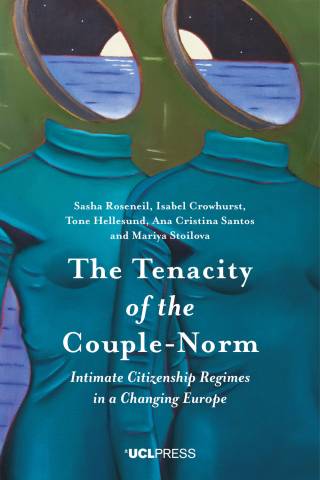Annamaria Dall’Anese (UCL Anthropology PhD student) reviews the book launch event for 'The Tenacity of the Couple-Norm', a work co-authored by Dean of the Faculty of Social & Historical Sciences.
Have you ever felt that your life was a failure whenever you failed to be part of a couple? The Tenacity of the Couple-Norm: Intimate Citizenship Regimes in a Changing Europe is a book that explores why the dyadic relationship between co-habiting (homo- or hetero-) sexual partners is still the relationship that pervades our imaginaries of intimacy and fulfilment. This model is so strong that even those who are not in a heteronormal, procreating union still measure themselves against it. The book, which was written by Sasha Roseneil, Isabel Crowhurst, Tone Hellesund, Ana Cristina Santos, and Mariya Stoilova, is not an attack against coupledom. Rather, it aims to raise our critical awareness of what types of relationship are socially sanctioned to provide us with physical and emotional closeness.

But why is the couple invested with so much importance in countries with such different cultural backgrounds and family structures, and why is it so enduring? Arlene Stein, who responded to the authors’ presentation, argued that norms in general are powerful because humans are social animals. We do resist norms, to the extent that we can, by creating varied household configurations. Therefore, multi-generational households, single people and co-habiting friends, among others, may offer alternative sources of affection, intimacy and care. But these innovations should be much more highly valued, and supported by social policy.
In fact, the second respondent, Ann Phoenix, highlighted that the solidarity that emerged during the Covid-19 pandemic among a wide variety of people (neighbours, volunteers) suggests that there is room for caregiving to develop outside of the couple. For instance, the UK Government’s decision to allow individuals living alone to form a ‘support bubble’ with another household recognised that fundamental material and non-material needs can be met by someone who is not a co-habiting partner. Similar solutions would bring relish to those who suffer because they are not in a couple, and would provide those who are with a broader range of sources of meaningful sociality.
This has implications for social policy. For example, who should be the recipient of welfare: the individual, the couple, the household, or perhaps another social unit? The project came full circle when the researchers realised that rethinking citizenship, which had been their objective at the start, had now resurfaced as a major contribution of their findings. Moreover, the impact of their book will certainly have many ramifications. The political, legal and administrative domains, for instance, are terrains were alternative forms of interdependence and mutuality can be discovered. They are also spheres where alternative sources of comfort, pleasure and understanding can be envisaged.
The purpose of the book is to help all of us untangle the existing ways of relating, loving and being, which are eclipsed by sedimented practices. It is also to invite us to be more open towards innovative possibilities of interconnection among humans. In line with its transdisciplinary and transnational spirit, the book is open access and free to download from the UCL Press website. Perhaps after reading it we will have a different answer to the question: ‘Is being in a couple the best way to live?’
 Close
Close

